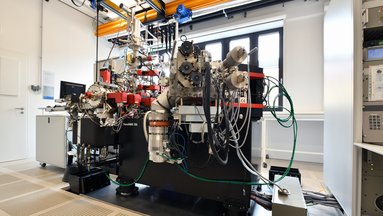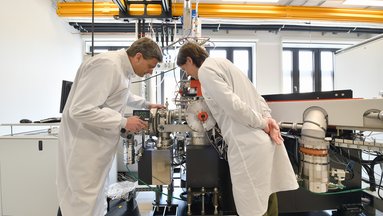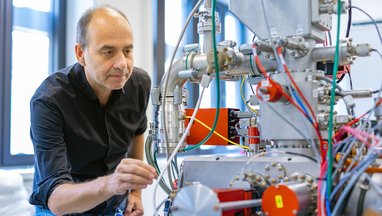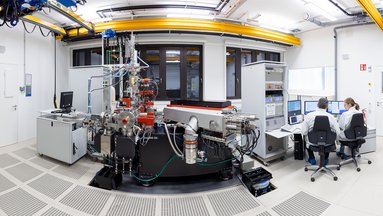Nanoscale Secondary Ion Mass Spectometry | NanoSIMS
Acquired in 2010 as part of the Large-Instrument Facility for Advanced Isotope Research, CeMESS operates a CAMECA NanoSIMS 50L. NanoSIMS is an advanced type of secondary ion mass spectrometer (SIMS) that allows us to determine the content of trace elements and isotopes with utmost sensitivity, down to sub-micrometer scales – smaller than a single microbial cell. It does this by bombarding a sample with a focused ion beam, which causes atoms and molecules from the sample to be ejected. The fraction of ionized particles is then detected based on the mass-to-charge ratio. NanoSIMS can detect up to seven distinct secondary ion species simultaneously, at single-ion-counting sensitivity. This method is perfectly suited for visualizing where different elements and isotopes are located in a variety of materials, ranging from sub-micrometer sized grains of minerals and alloys to tissues and microbial cells even down to the sub-cellular level.
At CeMESS, the NanoSIMS is primarily used for research in microbial ecology. It is often combined with other techniques like stable isotope probing and bulk analysis with isotope ratio mass spectrometry (EA-IRMS), as well as optical microscopy techniques like fluorescence in situ hybridisation (FISH). With this approach, we can learn about the phylogenetic identity, physiological function and interactions of microbes in various environments, such as soils, microbial mats, activated sludge, deep groundwater and even within symbiotic host organisms. In recent years, the NanoSIMS has been upgraded with a new oxygen ion source, enhancing its capabilities in ultratrace metal analysis. This allows for new types of studies, like investigating the role of metals in microbial cells.
This instrument is the only one of its kind in Austria. As such, the NanoSIMS facility at CeMESS collaborates with a wide range of research groups, both locally and internationally. Beyond conducting measurements, we also provide extensive support in designing studies, preparing and pre-characterising samples, and evaluating and interpreting data.





